We Don’t Just Build AI, We Deliver Measurable Impact Join...
Read MoreShopping malls and centers are crowded and frequently overwhelming for patrons, especially during rush hour. However, with the development of artificial intelligence (AI), it is now possible for retailers to improve client engagement and flow by optimizing the shop layout and architecture.
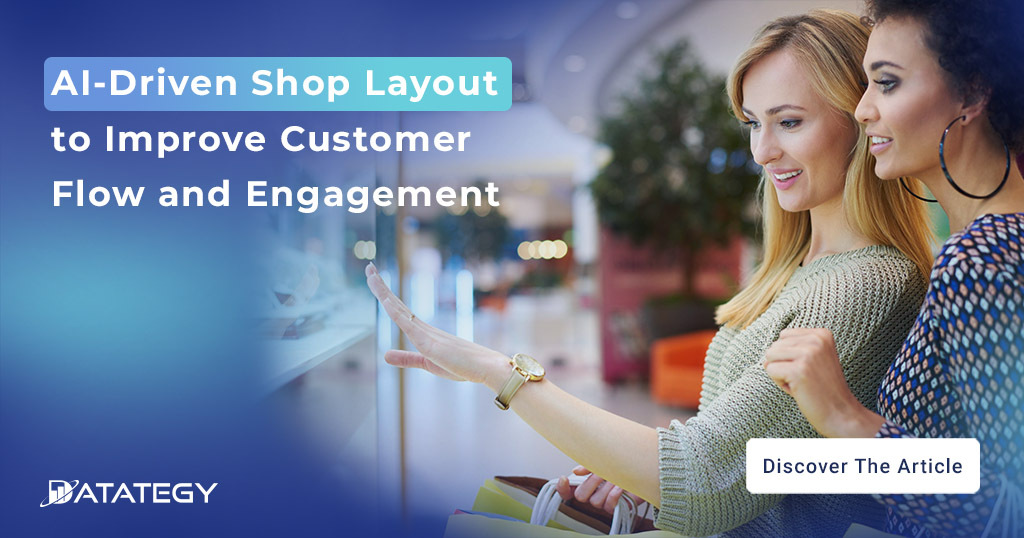
Retailers may learn how to build a more immersive and engaging shopping experience by using AI, which can offer insightful data on customer preferences and behavior. This article will examine how AI is applied to optimize shop layout and design in malls to enhance flow and customer engagement.
What is the difference between flow and customer engagement?
The movement of customers through the mall is referred to as customer flow. Retailers can examine customer flow information to learn how customers move across the mall and which areas are most frequently visited. Retailers can increase the likelihood that customers will visit their store by optimizing customer flow to place it in a busy area.
The level of interaction between the customer and the store is referred to as customer engagement, on the other hand. This might range from product displays to custom recommendations, all geared towards enhancing the buying experience. Retailers can boost consumer happiness and loyalty, which will improve sales, by delivering a more interesting shopping experience.
Shopping centers are bustling hubs of activity, filled with a diverse mix of customers looking to explore the latest products and find great deals. However, for retailers, attracting customers to their stores is only half the battle. The other half involves optimizing customer flow and engagement to ensure that customers not only visit their store but also have a positive experience that leads to increased sales and loyalty.
What are the benefits of optimising customer flow and engagement in shopping centres?
- Increased Sales: Optimizing customer flow and engagement can lead to increased sales for retailers in shopping centers. By attracting more customers and providing a positive shopping experience, retailers are more likely to generate sales and increase their revenue.
- Improved Reputation: By creating a more positive and engaging shopping experience, customers are more likely to view the shopping center as a desirable destination for shopping. This can lead to increased foot traffic and sales for all retailers, improving the overall reputation of the shopping center.
- Increased Flow: A positive shopping experience can lead to increased foot traffic, as satisfied customers are more likely to return to the shopping center and continue shopping with their favorite retailers. This can create a snowball effect, leading to even more foot traffic and sales for all retailers in the shopping center.
- Increased Customer Loyalty: Customers who have a positive shopping experience are more likely to return to the shopping center and continue shopping with their favorite retailers. This can lead to increased customer loyalty and advocacy for the shopping center and its retailers. Positive Word-of-Mouth: Satisfied customers are more likely to recommend the shopping center and its retailers to their friends and family. Positive word-of-mouth can help to attract new customers and increase sales for all retailers in the shopping center.
- Competitive Advantage: By prioritizing customer flow and engagement in their strategies, retailers can differentiate themselves from their competitors and gain a competitive advantage in the marketplace.
- Improved Customer Satisfaction: A positive shopping experience can lead to increased customer satisfaction, which can help to build long-term relationships with customers and increase customer loyalty.
- Increased Efficiency: By optimizing customer flow, retailers can create a more efficient shopping experience for their customers, reducing wait times and improving the overall shopping experience.
Layout types
The grid layout, the freedom layout, the racetrack shop, and the circulation spine layout are the four main store layout styles.
The grid layout consists of long, rectangular aisles and displays that are typically parallel to one another (Worse to come 2020), chain pharmacies, grocery stores, and supermarkets frequently use this style of arrangement. End caps are a grid pattern where staples like milk and eggs are placed at the back of the store. As a result, when customers look for necessities, they have to pass by a number of other goods. Sales potential is increased by this product exposure.
The free-form layout uses a variety of various sizes, shapes, and display styles in a free-flowing and asymmetrical arrangement of aisles and displays. Customers may spend more time in a store with this arrangement. Additionally, compared to the grid layout format, it gives customers a larger view of the merchandise. This improves the likelihood that customers would engage in exploratory activity and examine new products.
The racetrack layout, also known as a loop pattern and “often in the shape of a circle, square, or rectangle-returns the customer to the front of the store,” provides a central lane to control customer traffic to the store’s several entrances. In order to expose customers to as many retail departments as possible, this architecture directs them along a predetermined.
A circulation spine layout has a traffic loop that circles the entire store but also has a direct customer path running through the heart of it.
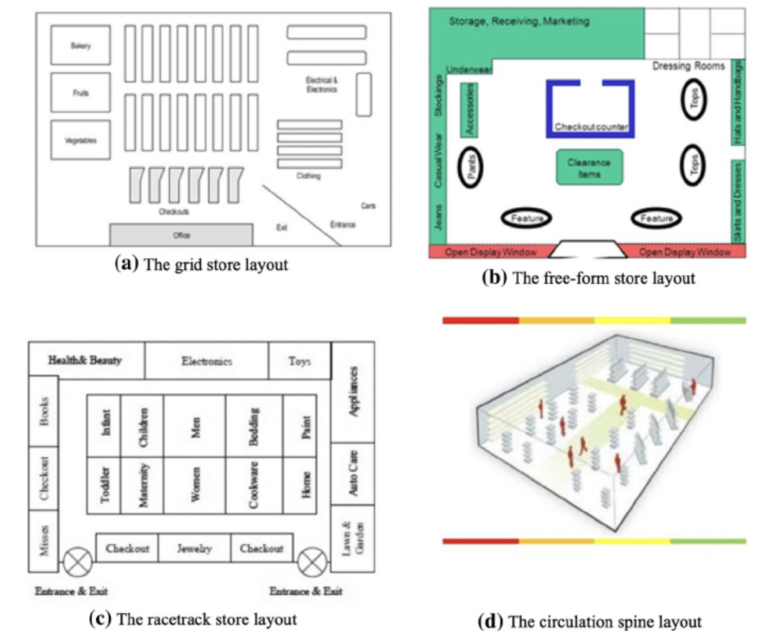
Arrangement design strategies
Three factors are primarily used in conventional retail shop layout design approaches: product categories, cross-elasticity, and consumption universes.
Product categories: Based on the implications of the industry, this layout mostly shows manufactured products. Supermarkets arrange similar products together to make it easier for customers to choose them. Supermarkets, for instance, commonly arrange products into sections for the bakery (for instance, grouping items like bread, cakes, and biscuits), the vegetable section (for instance, beans, cabbages), and the fruit section (e.g., apples and oranges), consumers are accustomed to locating products on the same shelf or in the same aisle.
Cross-elasticity: This design stresses how changing prices in one product can affect sales of that product it also captures how pricing can be used to capture cross-product interactions in demand. Product categories are arranged side by side in accordance with cognitively logical pairs, which are referred to as cross-elasticities. The use relationship between categories is therefore captured. With this design, customers can quickly compare products’ advantages and disadvantages during a single store visit.
Consumption universes: This is a “data mining approach using a consumer-oriented retail layout strategy”. This arrangement presents breakfast items including tea, bread, cheese, and cereal all in one location. Instead of looking for tea in the beverage department, fresh cheese in the cheese section, and cereal in the cereal section, use this strategy. Other universe kinds include the dinnerware world and the infant universe, which can be grouped into various product categories. It can be quite appealing to busy consumers to group products based on consumer purchasing patterns. Customers may feel satisfied in these scenarios since the retailer seems to comprehend their requirements and personal situations, which in turn may influence consumer purchase decisions favorably.
AI for Retail: A Comprehensive Guide to Choosing the Best Solution for Your Business Needs
When choosing an AI solution, consider factors such as integration with existing systems, data privacy and security, compatibility with your business needs, and scalability. By carefully evaluating these factors, you can choose an AI solution that will help your retail business thrive in an ever-changing market.
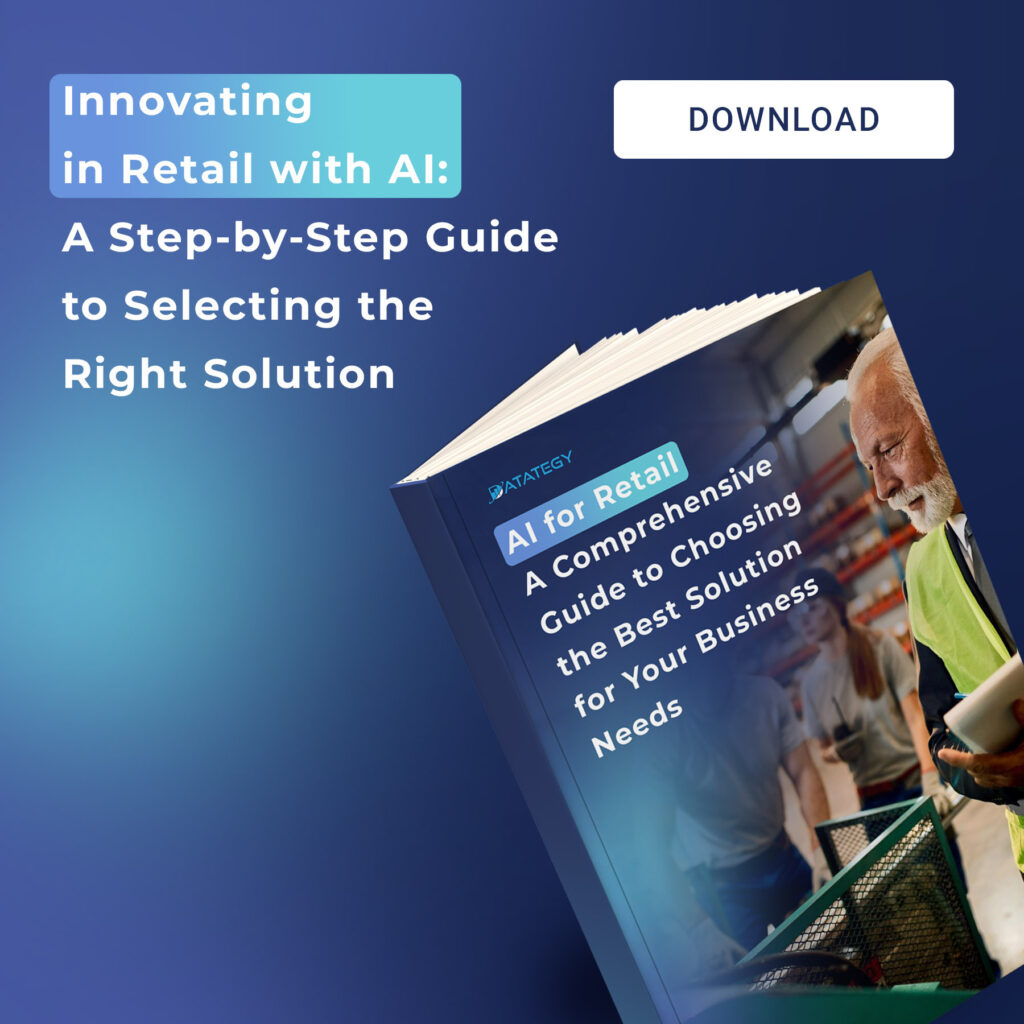
Optimizing shopping center layouts and customer engagement using AI techniques.
AI can help shopping centers improve customer flow and engagement in a variety of ways. Here are some techniques that AI can use to optimize shopping center layouts and improve customer engagement:
1- Heatmaps and Flow Analysis
Important techniques that can be utilized to improve client flow and engagement in shopping centers include heatmaps and flow analysis. Heatmaps are graphic representations of data that illustrate the most popular regions and where customers are spending the most time. Contrarily, flow analysis examines how customers travel about the shopping center, including how long they stay in each section and which ones they frequent the most.
AI can gather information on client movement and behavior using sensors and cameras that have been deployed around the shopping center. Informed decisions on store layouts, product placement, and other facets of the shopping experience can be made by merchants and shopping center management with the use of heatmaps and flow analysis reports made from this data.
For example, if the data shows that customers are spending more time in one area of the shopping center than others, retailers can use this information to optimize store layouts and product placement to encourage more customers to visit other areas of the shopping center. This can help to balance customer flow and reduce congestion in popular areas of the shopping center.
Similarly, flow analysis can help retailers and shopping center managers identify areas where customers are spending too much time, which can indicate long wait times or congestion. By analyzing this data, retailers can identify areas where improvements can be made to reduce wait times and improve the overall shopping experience.
Heatmaps and flow analysis can be utilized to spot common trends and patterns in consumer behavior in addition to streamlining customer flow and decreasing wait times. Retailers can use the data to tailor their product offers and marketing efforts to better suit the requirements and preferences of their customers, for instance, if it reveals that some brands or goods are more popular than others.
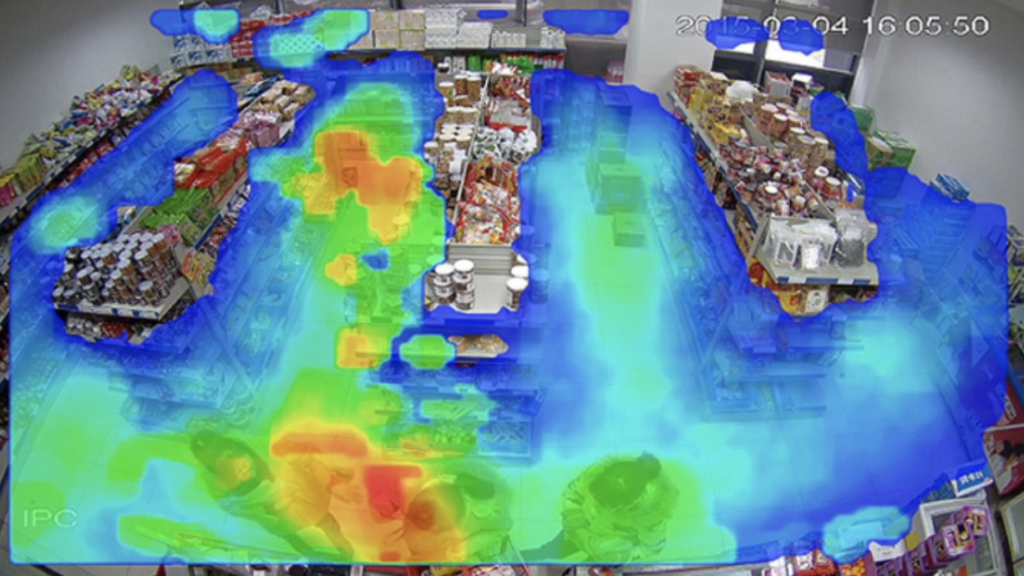
2- Facial recognition
Another method that shopping centers might employ to enhance the layout of their shops is facial recognition. Customers may be recognized as they enter the retail center and their motions can be followed as they move about the space using facial recognition technology. The placement of products in stores and other elements of the shopping experience can be improved using this data.
Here are some ways that facial recognition can help shopping centers improve their shop layouts:
Identifying High-Traffic Areas: By using facial recognition to track the movements of customers, shopping centers can identify high-traffic areas where customers tend to congregate. This information can be used to optimize store layouts and product placement to take advantage of these high-traffic areas.
Personalizing the Shopping Experience: Facial recognition can be used to identify returning customers and provide them with personalized recommendations based on their past purchases and browsing history. This can create a more engaging and personalized shopping experience and help customers find products they are interested in more quickly.
Reducing Wait Times: Facial recognition can be used to identify customers who are waiting in line and alert staff to open additional checkout lanes to reduce wait times. This can improve customer satisfaction and reduce congestion in popular areas of the shopping center.
Improving Security: Facial recognition can be used to identify known shoplifters or individuals who have been banned from the shopping center. This can help to improve security and reduce theft.
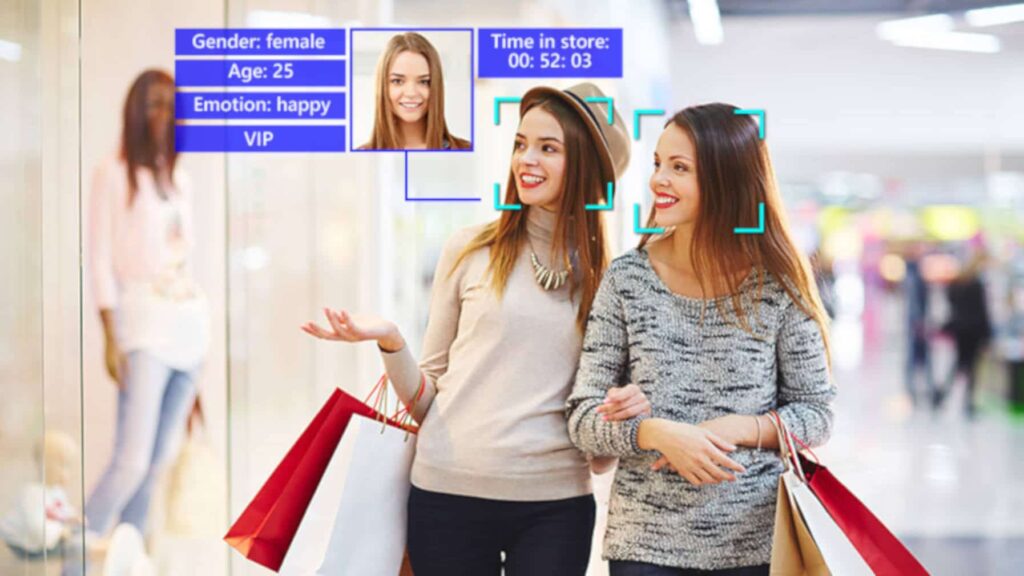
3- Customer tracking
Customer tracking is another technique that can be used by shopping centers to improve their shop layouts. This involves using sensors, beacons, or other technologies to track customer movement throughout the shopping center. The data collected can be used to optimize store layouts, product placement, and other aspects of the shopping experience.
The technology used for customer tracking varies, but typically involves sensors or beacons placed throughout the shopping center that can detect the presence of a customer’s mobile device. This allows the system to track the customer’s movements throughout the center and collect data on which areas are most popular, how long customers stay in each area, and how frequently they visit certain stores or sections of the shopping center.
By collecting this data, shopping centers can gain insights into which areas are most popular and what products or services are in high demand. This information can then be used to optimize the shop layout and design to better meet the needs of customers. For example, if data shows that customers tend to spend a lot of time in a certain area of the shopping center, the shop layout can be optimized to make that area more engaging and to direct traffic flow to other areas of the center. Or, if data shows that customers are frequently visiting certain stores or sections, the shop layout can be optimized to make those areas more visible and easier to access.
Conclusion
In conclusion, AI-driven shop layout and design can greatly improve customer flow and engagement by leveraging technology to optimize the shopping experience. With the use of AI platforms such as Papai AI, retailers can gain valuable insights into customer behavior, preferences and habits, which can be used to tailor the shopping experience to better meet their needs. By incorporating AI into shop layout and design, retailers can enhance the overall customer experience, increase sales and improve brand loyalty. If you are interested in learning more about how Papai AI can help optimize your shop layout and design, we invite you to book a demo and see the platform in action. Our team of experts will provide you with a personalized demo and answer any questions you may have. Take advantage of this opportunity to learn more about the benefits of AI and how it can help you to achieve your business goals.
Interested in discovering papAI ?
Our commercial team is at your disposal for any question.
AI’s Role in Translating Complex Defence Documentation
AI’s Role in Translating Complex Defence Documentation The defence sector...
Read MoreHow AI Transforms Technical Documentation in Medical Devices and Life Sciences
How AI Transforms Technical Documentation in Medical Devices and Life...
Read MoreDatategy and Alpha X Join Forces to Strengthen AI-Driven Governance Across EMEA
Datategy and Alpha X Join Forces to Strengthen AI-Driven Governance...
Read More


